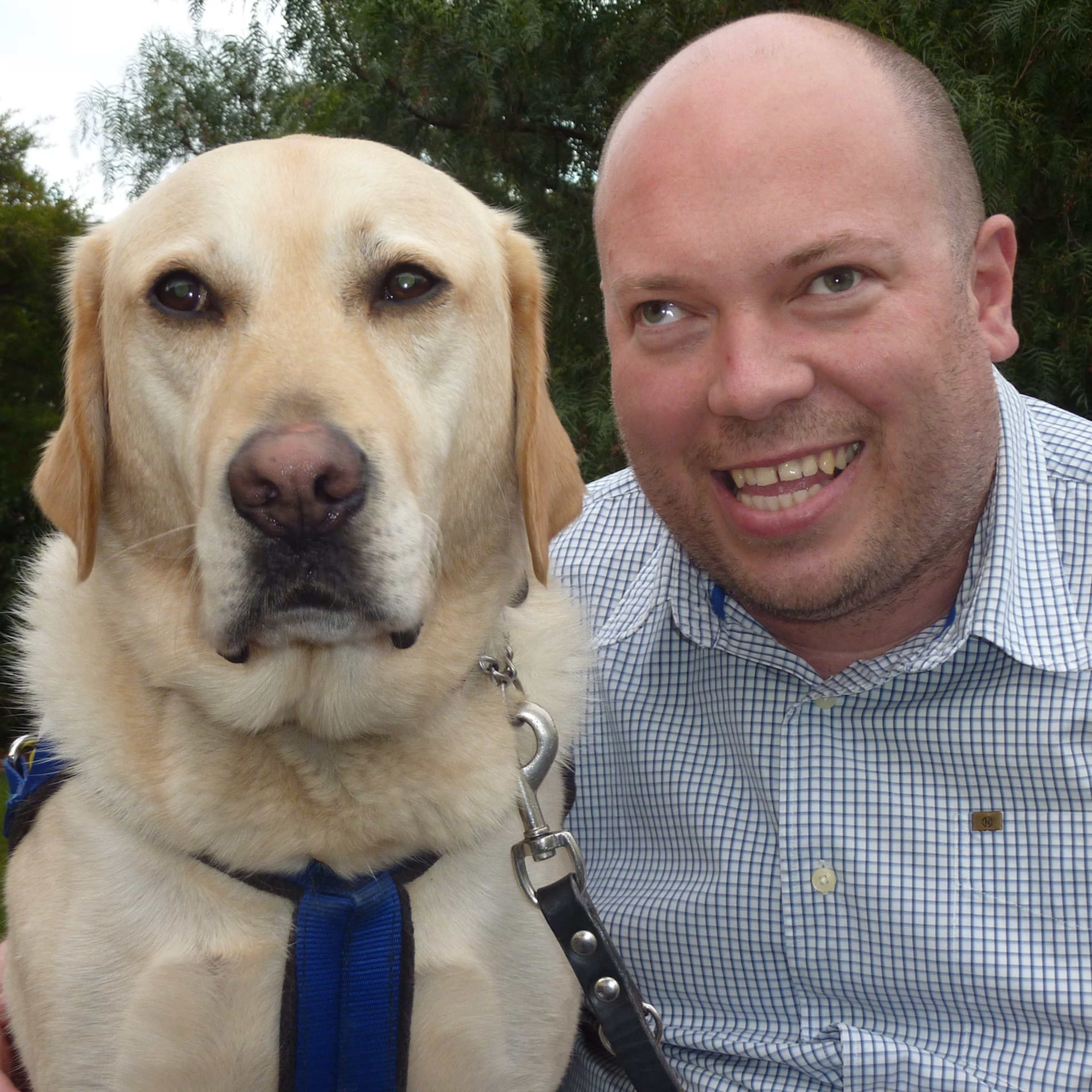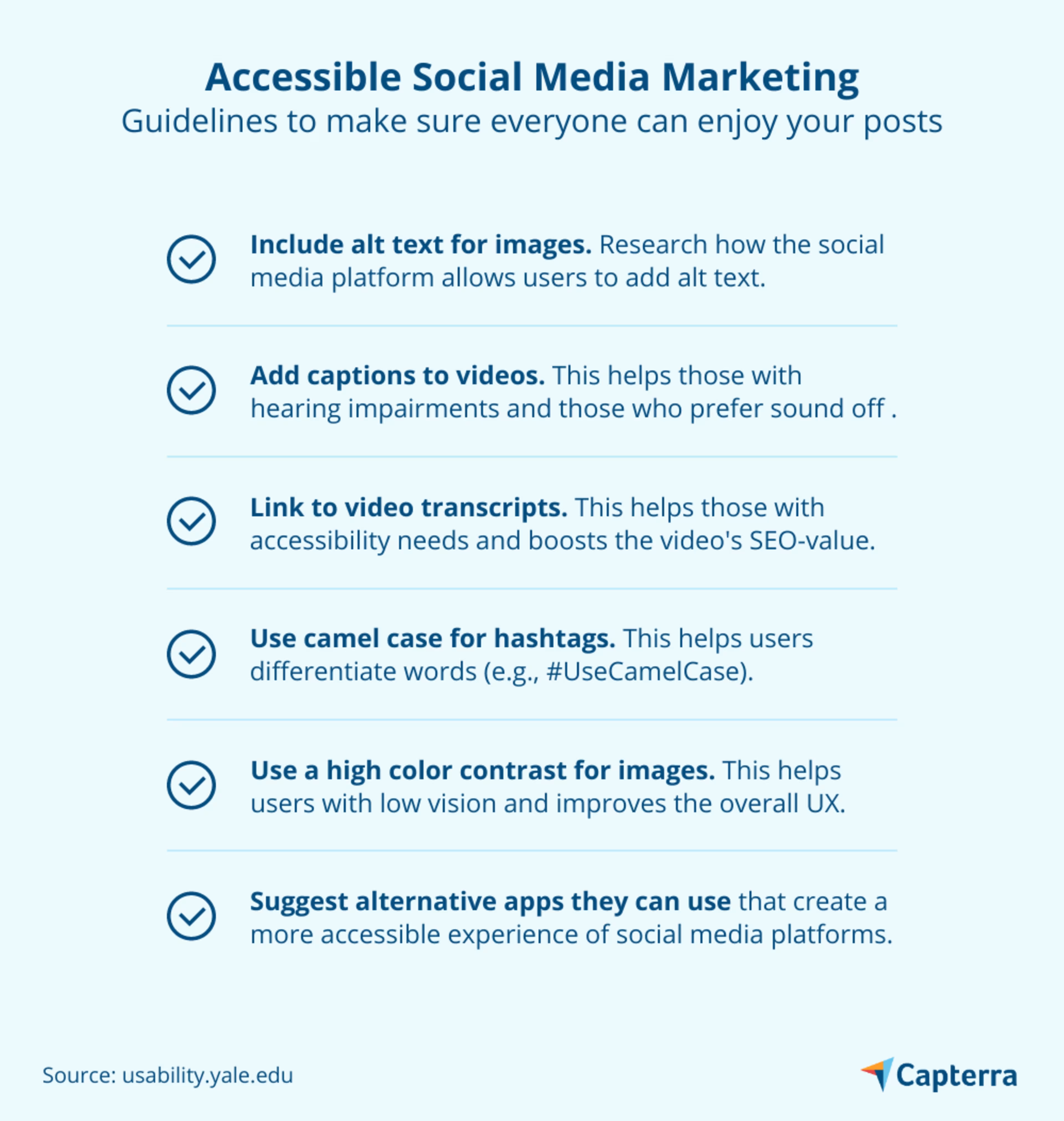Accessibility comes in many different forms. Here’s how one business owner designed his business and marketing strategy for accessibility and inclusivity.

Dale Reardon enjoys going on adventures with his seeing-eye dog, Charlie, but the logistics of travel can be tricky when you have specific accessibility needs.

Reardon has been blind since he was 17 years old and has been a longtime disability advocate. This has led him to co-founding his business Travel For All with his wife, Jo Reardon. They launched Travel for All in January 2020, right before travel came to a screeching halt and a global quarantine went into effect.
They had to figure out how to market and advertise their new business, which Dale says he hopes will become the “Tripadvisor for accessible and inclusive travel.”
Don’t miss out on ways you can make your marketing strategy accessible
Dale and Jo built Travel For All to give people a resource to find destinations and accommodations that fit with their accessibility needs and to give businesses in the travel and tourism sector the opportunity to become more accessible to more customers.
Their whole business is built around accessibility. Here’s how they incorporated these values into their marketing strategy and how you can too.
1. Understand what you can control… and what you can’t
People are online, but not every online space is created equally when it comes to accessibility.
You can control how accessible some of these spaces are, while you can’t control others. For example, you can control how accessible your own business’ apps and websites are, but you can’t control the accessibility of social media platforms.
Dale and Jo manage their business’ website using WordPress, which includes features to help users make their website more accessible to those with accessibility needs, such as those with vision impairments.
They also follow simple guidelines that make websites more accessible and lead to a better user experience for everyone, such as intuitive navigation, proper HTML headings, descriptive alternative (or alt) text on images, and high color contrasts.
You won’t be able to control every digital space you use to connect with customers, so take full advantage of the opportunity to make sure your website fully complies with accessibility standards.
2. Optimize your content for accessibility and SEO
Social media can be a powerful marketing tool to funnel people to your website, but these platforms are not experienced the same way by all users. Those who rely on assistive technologies such as screen readers may have a difficult time navigatings these platforms.
“Social media can be frustrating to people with vision impairments and hearing impairments,” Dale said.
Some common challenges stem from a lack of inclusive design basics such as not being able to navigate the platform with a keyboard, lack of HTML structure, and visual content without alt text, transcripts, or captions.
The good news is that there are ways to make the content you share on these platforms more accessible, even though you can’t change the “bones” or backend structure of the site.
Twitter, Facebook, and LinkedIn do have features [for accessibility] there but they don’t heavily promote them, so people don’t usually know it’s possible.
Dale Reardon
Co-founder of Travel For All
Dale and Jo use SmarterQueue to schedule posts and track metrics. However, using software can sometimes inhibit access to accessibility features offered by social media platforms, Dale says.
“Sometimes you just have to put some text into your Tweet, and LinkedIn or Facebook post to explain what the photo is about.”
To make social media marketing posts accessible, he also uses hashtags minimally and uses camelcase when he does.
FREE ACCESSIBLE #TOURISM GUIDE FOR OPERATORS-Download our free guide to learn more about inclusive & accessible tourism-Get easy tips for attracting more guests from this loyal & growing market https://t.co/osmh4W3hFE #disability #accessibleTourism #TravelForAll
— Travel For All (@travelforall_) January 19, 2021
Camelcase is when you capitalize the first letter of each word in the hashtag—i.e., #TravelForAll instead of #travelforall and #accessibleTourism instead of #accessibletourism. (Source)
For videos, he recommends including captions and transcripts and turning off the autoplay function.
While these actions help users with hearing impairments, they benefit other users too.
“Lots of people looking at videos at work don’t want the sound on and they will use the captions as well,” Dale says. “Things you can do for accessibility can actually help everyone.”

3. Include accessibility information in your marketing content
Dale encourages businesses to be transparent in their marketing about the services and products they offer, recalling his own bad experience with a rental property.
“The advertising completely misrepresented the property in terms of features and facilities,” Dale said.
Accessibility needs come in many different forms and are not limited to only vision and hearing impairments. Accessibility needs could be for people who are aging, have temporary injuries, disabilities, and those who require accommodations that are safe for children.
“Accessibility is about facilities, information, and attitude,” Travel For All’s guide shares. “It is about sharing detailed information so that people can make decisions for themselves...”
For example, within the tourism and travel sector, Dale says if a hotel offers a swimming pool, it should include information such as its depth, descriptions of the image of the pool, and accessibility features.
You can also add this information to social media marketing posts. For example, if you have a simplified version of your website for users with internet connectivity issues, tell them about it. If you recently did an accessibility audit of your website and made changes to make it more accessible, make sure to let your audience know.
By including accessibility information in your marketing content, you let customers with accessibility needs know what you’re doing for them, which builds long-term trust.
Make your business accessible to all customers
Good marketing is about understanding your customers’ journeys. If your website is the destination, then social media is a common path that leads customers to it. But this road is not always traveled the same way by all internet users, and it’s not always well-paved.
Your customers who use assistive technologies to navigate the web may have a more difficult time following your call to action if your social media posts are not optimized for accessibility.
Similarly, if your website is not accessible, some customers may be cut off from your business.
By being both aware of accessibility when developing your marketing strategy and making social media marketing content accessible, you can connect with more people and make sure you’re not missing out on potential customers.
Software can help you manage social media posts and make sure you’re complying with accessibility laws.
Learn how your peers are overcoming adversity
Find out how others in the Capterra community are using technology to overcome challenges, and learn from each other. We’re in this together.
